TEN YEARS AGO TODAY! MXA’S COMPLETE 2014 KTM 250SX TWO-STROKE TEST
FIRST AND FOREMOST, IS THE 2014 KTM 250SX BETTER THAN THE 2013 KTM 250SX?
A: Yes. Unlike the Japanese manufacturers, the Austrians haven’t sat on their two-stroke designs. The KTM 250SX two-stroke has benefitted from every major chassis, brake, frame and cosmetic mod that the KTM 250SXF, 350SXF and 450SXF four-strokes have gotten. And, the changes they made for 2014 are all subject to interpretation.
Q: WHAT CHANGES DID KTM MAKE TO THE 2014 ENGINE?
A:The biggest news is that KTM switched from Moto Tassinari reeds to Boyesen reeds, but we aren’t talking about a Boyesen RAD valve system. KTM designed their own reed block that you would swear was still a Moto Tassinari VForce unit (since it features twin Vs and eight petals). Boyesen supplies KTM with their all-new RC2 performance-weave carbon fiber petals. The new KTM/Boyesen reed system fits into the engine at a steeper angle, and the 2014 reeds will fit into any previous 250SX with a four-bolt reed block.Other engine changes include:
(1) Clutch. The 250SX shares the unique Belleville washer-activated clutch with the 450SXF, and, for 2014, both bikes get reinforced inner hubs for more durability. In a minor mod, the hydraulic clutch’s master cylinder has had the reservoir bead blasted and the cap painted black.
(2) Cylinder head. The combustion chamber has been optimized with new squish and a new shape, although the compression ratio remains unchanged.
(3) Black box. The ignition mapping has been advanced to work in unison with the new combustion chamber.
(4) Jetting. KTM two-strokes have always been on the verge of being too lean, so, for 2014, KTM swapped needles for more fuel in the midrange.
Q: WHAT ELSE IS NEW ON THE 2014 KTM 250SX TWO-STROKE?
A: Most of the following changes came courtesy of model-line improvements that were made to virtually every 2014 KTM.
(1) Swingarm. The chain guide mounts on the swingarm have been stiffened (the previous design was prone to bending when the chain guide dragged through deep ruts). KTM also redesigned its chain guide, which is smaller, flexes more and is 120 grams lighter.
(2) Front brake. KTM made revisions to what we deem the most powerful front brake on the planet. The master cylinder has a new reservoir, updated lever, optimized kinematics (a fancy word for motion) and a smaller piston diameter (down from 10mm to 9mm) for greater braking power. Revised brake pads also increase performance.
(3) Seat foam. The foam core of the saddle has been reformulated to be softer initially, but not break down as quickly. We’ve heard that before.
(4) Gas cap. The internal threads on the gas cap have been reworked for more positive engagement, and the gas cap has a new, low-profile shape. It doesn’t stick up as high as last year’s cap.
(5) Aesthetics. For 2014, the shrouds, air filter cover and winglet graphics above the shock bladder receive the in-mold treatment, which is very durable. KTM also swapped the orange Renthal FatBar bar pad for a black model. Either way the Renthal bar pad only last about a month before roost cracks the vinyl cover.
Q: HOW FAST IS THE 2014 KTM 250SX?
A: We didn’t really expect the 2014 KTM 250SX to be faster than the 2012–’13 models and it wasn’t, but the changes in the combustion chamber, ignition timing, reed block and jetting did change the powerband. It’s still fast, but it traded top and peak horsepower for more low-to-mid power. It is easier to ride.
Although you might be tempted to compare the two-stroke to the four-stroke, there is no comparison. They aren’t the same animals. A two-stroke hits hard and accelerates instantly. It is quick and aggressive, whereas a four-stroke is broad and torquey. If you are one of the mass majority who thinks a 450cc four-stroke is too powerful, stay away from the 2014 KTM 250SX. It will blow an unsuspecting rider off the back of the saddle, wheelie out of every corner and spin the rear tire like a Top Fuel dragster. The power delivery of a 250 two-stroke makes a 450 four-stroke seem suitable for a little old lady from Pasadena.
All that said, most MXA test riders prefer the punchier 2013 powerband over the 2014 version. The new engine has better roll-on power, but feels flatter in the mid-and-up portion. Plus, it gives away one horse at peak. It is easier to ride than the 2013 model—but we came to race.
Q: WHAT IS THE EASIEST WAY TO MAKE THE 250SX FASTER?
A: You need to consider buying the KTM Power Parts 300cc big-bore kit. For around $950, the KTM kit comes in two flavors—enduro and motocross—with the major differences being the compression ratio and ignition timing. It is a great addition for a rider looking for more midrange and a healthy increase in overall torque.
Q: WHAT DO YOU NEED TO KNOW ABOUT THE 2014 KTM 250SX?
A: Shock linkages. Every MXA test rider chooses to run a 1.25mm-longer Pro Circuit link. It lowers the rear of the bike, which pays handling dividends, because with the lower rear you can slide the forks up in the clamps to lower the whole chassis. Although it doesn’t change the rising rate, it changes the starting point of the rising rate.
This stiffens the initial part of the rear stroke to help lessen wallowing under acceleration—which is what KTM plans to do with the linkage on the 2015 model
Gas cap vent hose. KTM’s vent hose gets twisted in a knot when you remove the gas cap. We drill a hole in the fork steering stem cap to slip the vent hose into it so the vent hose can spin with the gas cap.
Preload ring. Sadly, the only way to put an aftermarket aluminum preload ring on the WP shock is to take the shock completely apart. When you have your shock serviced, ask the shock technician to install an aftermarket aluminum preload ring or X-trig adjuster.
Spokes. The spokes never stay tight, especially the spokes next to the rim lock. You can only solve this problem by lacing up better rims.
Sprocket bolts. Watch them like a hawk.
Kreft PowerDial. The Kreft PowerDial is an easy-to-install KTM 250/300 power-valve adjuster. It replaces the stock KTM system so that adjustments can be made in seconds. The PowerDial retails for $89.95 from www.kreftmoto.com or (970) 403-2715.
Intelajet. We love this carb mod. It has the feel of a supercharger. The gain in top-end power and overrev was immediately noticeable to every MXA test rider. The retail price is $425 (carb bored progressively from 36mm to 39mm with Intelajet installed), $30 (Intelajet mounting kit) and $40 (taper-bore carb ends). For more information, call (916) 722-2373 or go to www.dicksracing.com.
7602 Racing brake pedal tip. Colorado-based 7602 Racing machines a 7075 aluminum brake tip that has sharper teeth and can be moved fore or aft a half inch. Visit www.7602racing.com or call them at (719) 274-0606.
Pro Circuit pipe. Bolting on a Pro Circuit 250SX pipe ups the horsepower on the top end, especially after the stock pipe signs off, by more than 5 horsepower. If you can’t afford the pipe, consider the Pro Circuit R304 silencer because it is almost as good as the pipe itself. For more information, call (951) 738-8050 or go to www.procircuit.com.
Steahly flywheel weight. A bolt-on Steahly flywheel weight installs in minutes (without having to remove the stock flywheel) and improves the traction, usability and breadth of the fire-breathing, 50-horsepower KTM 250SX. We like this feel. Go to www.steahlyoffroad.com for more info.
Q: HOW DOES THE 2014 KTM 250SX HANDLE?
A: Riding the 250SX is like racing Formula 1 with Kimi Raikonnen, sitting in the rear seat of an F-22 Raptor or pulling the trigger on Dirty Harry’s 44 Magnum. Things happen fast on a 50-horsepower two-stroke—not just because it weighs 20 pounds less than a 450 four-stroke, but because it hits hard, wheelies, slides around corners and produces maximum horsepower in the blink of an eye. This is what a motocross bike should be like—hyperactive, over-caffeinated and attention-deficit disordered. This is a machine that makes your heart climb as much out of love for the thrills as for the total commitment it takes to race one.
Yes, four-strokes are easier to ride. Yes, four-strokes deliver their power in broad, mellow doses. Yes, station wagons are more useful than Porsche 917s. But, which would you rather drive?
Q: WHAT DID WE HATE?
A: The hate list:
(1) Seat foam. Yes, we know that KTM has all-new seat foam for 2014, but they need to go back to the drawing board because it still breaks down too soon.
(2) Shock preload ring. How do we hate thee? Let us count the ways.
(3) Seat height. This bike would be so much better if it were an inch lower.
(4) Rims. The rims may say Excel on them, but these aren’t your father’s Excels. These are cheap OEM versions that are made of oleomargarine.
Q: WHAT DID WE LIKE?
A:The like list:
(1) Price. Expect to spend close to $2000 less for a 250SX two-stroke than a 450SXF. That money could finance your complete racing season.
(2) Weight. This bike used to weigh 212 pounds. Now it weighs 218 pounds. Thank the linkage system for the weight gain. It is still light compared to a thumper.
(3) Brakes. This is how every bike should stop.
(4) Hydraulic clutch. Memo to Honda, Yamaha, Suzuki and Kawasaki: KTM has invented a new thing called hydraulics. Please try it out.
(5) Maps. There are two maps in the 250SX black box. MXA always uses the stock map, but you can access the “soft” map by unplugging the white connector located on the left side of the frame under the tank. The soft map is for hardpack.
Q: WHAT DO WE REALLY THINK?
A: If you’re in the market for a new bike in 2014, you owe it to yourself to put the KTM 250SX two-stroke on your short list. It’s lighter, cheaper, easier to maintain, quicker, better handling, quicker stopping and makes more horsepower per cc than any four-stroke—short of the one in John Force’s car.
MXA’S 2014 KTM 250SX SETUP SPECS
This is how we set up our KTM 250SX for racing. We offer it as a guide to help you find your own sweet spot.
WP FORK SETTINGS
The KTM 250SX forks are nothing to write home about, but they can be raced by Novices and Vets in stock trim. Fast riders or jumpy tracks are gonna result in a lot of bottoming. For hardcore racing, we ran this setup on the 2014 KTM 250SX (stock clickers are in parentheses):
Spring rate: 0.46 N/mm
Oil height: 370cc Vets, 390cc Pros (380cc stock)
Compression: 7 clicks out (12 clicks out)
Rebound: 12 clicks out
Fork-leg height: 5mm up (flush on a sandy track)
Notes: The cheapest way to fine-tune the KTM’s WP forks is to raise and lower the fork oil height to get the smoothest midstroke action without bottoming, which is why we lowered the oil height by 10cc for Vets and raised it 10cc for Pros. KTM’s forks come with different oil heights for each model. The 125SX and 150SX have their oil set at 360cc, the 250SX has 380cc, and the four-strokes roll out of the factory with 390cc.
WP SHOCK SETTINGS
For hardcore racing, we ran this setup on the 2014 KTM 250SX:
Spring rate: 5.4 N/mm
Race sag: 105mm
Hi-compression: 2 turns out
Lo-compression: 15 clicks out
Notes: We ran a 1.25mm-longer Pro Circuit shock linkage. Not only did it lower the rear of the bike by 10mm, it stiffened up the initial part of the shock’s stroke to help widen the range of the stock 5.4 shock spring. Faster or heavier riders might be required to go to the stiffer 5.7 N/mm shock spring. If you are savvy, you will use free sag to make the decision for you.
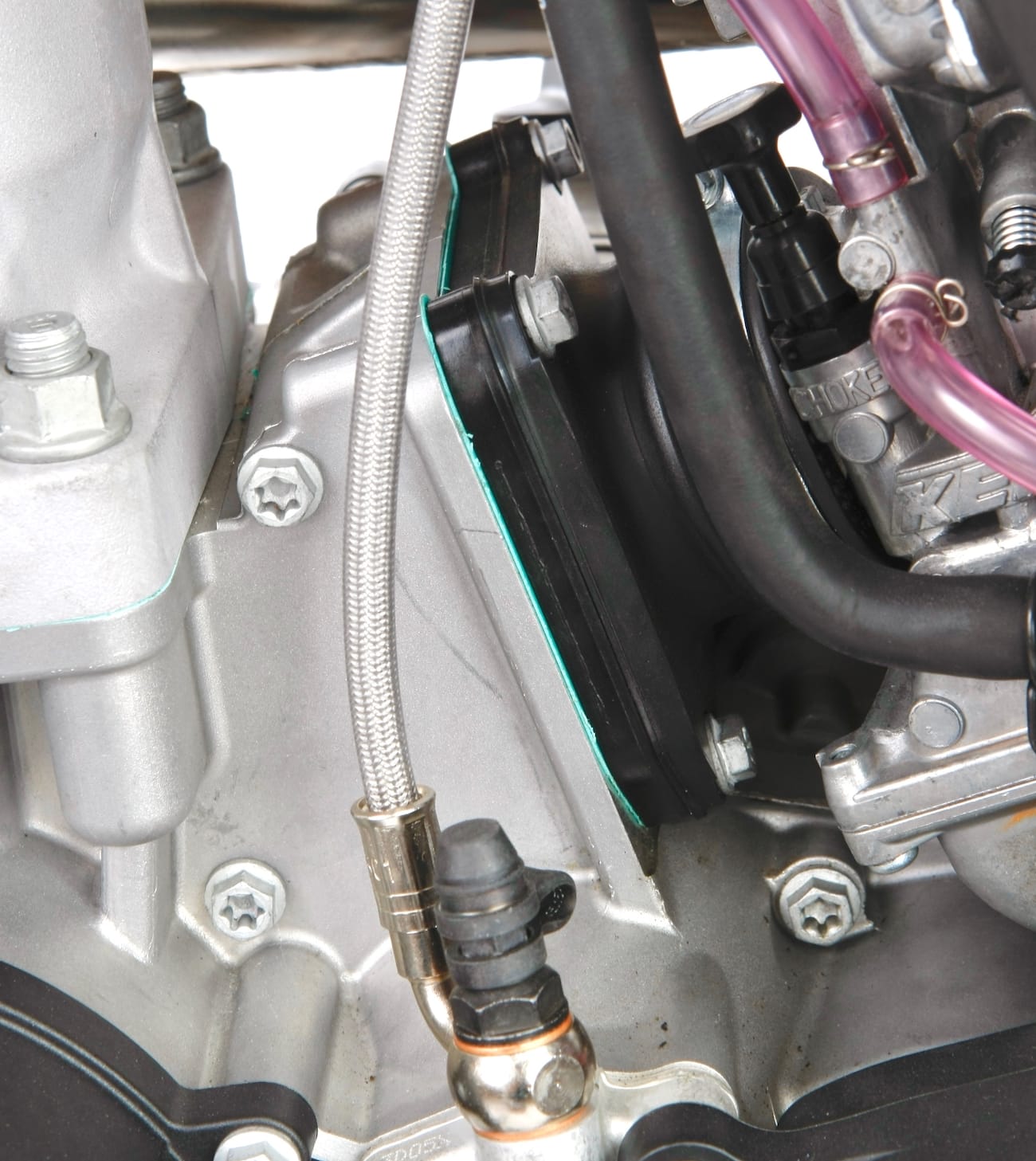
KEIHIN PWK 36S JETTING SPECS
Last year we ran the optional richer N1EH needle in place of the stock N1EI needle. For 2014, KTM has made the richer N1EH needle stock, made the N1EI the optional lean needle and added an even richer optional N1EG needle. KTM also raised the needle one clip position (from the third to the fourth clip from the top). If you ride in cool weather, consider going to a 160 mainjet and N1EG needle. We also swapped out the stock 42 pilot jet for the leaner 40.Here are MXA’s recommended jetting specs for the 36mm Keihin PWK carb (when changed, stock specs are in parentheses):
Main: 158
Pilot: 40 (42)
Needle: N1EH
Clip: 4th from top
Air Screw: 1-1/2 turns
Notes: For the full-race effect, we send our carb off to Dick’s Racing to have it taper-bored to 39mm with an Intelajet system installed. This mod boosts top-end power significantly. For more information, call (916) 722-2373 or go to www.dicksracing.com.


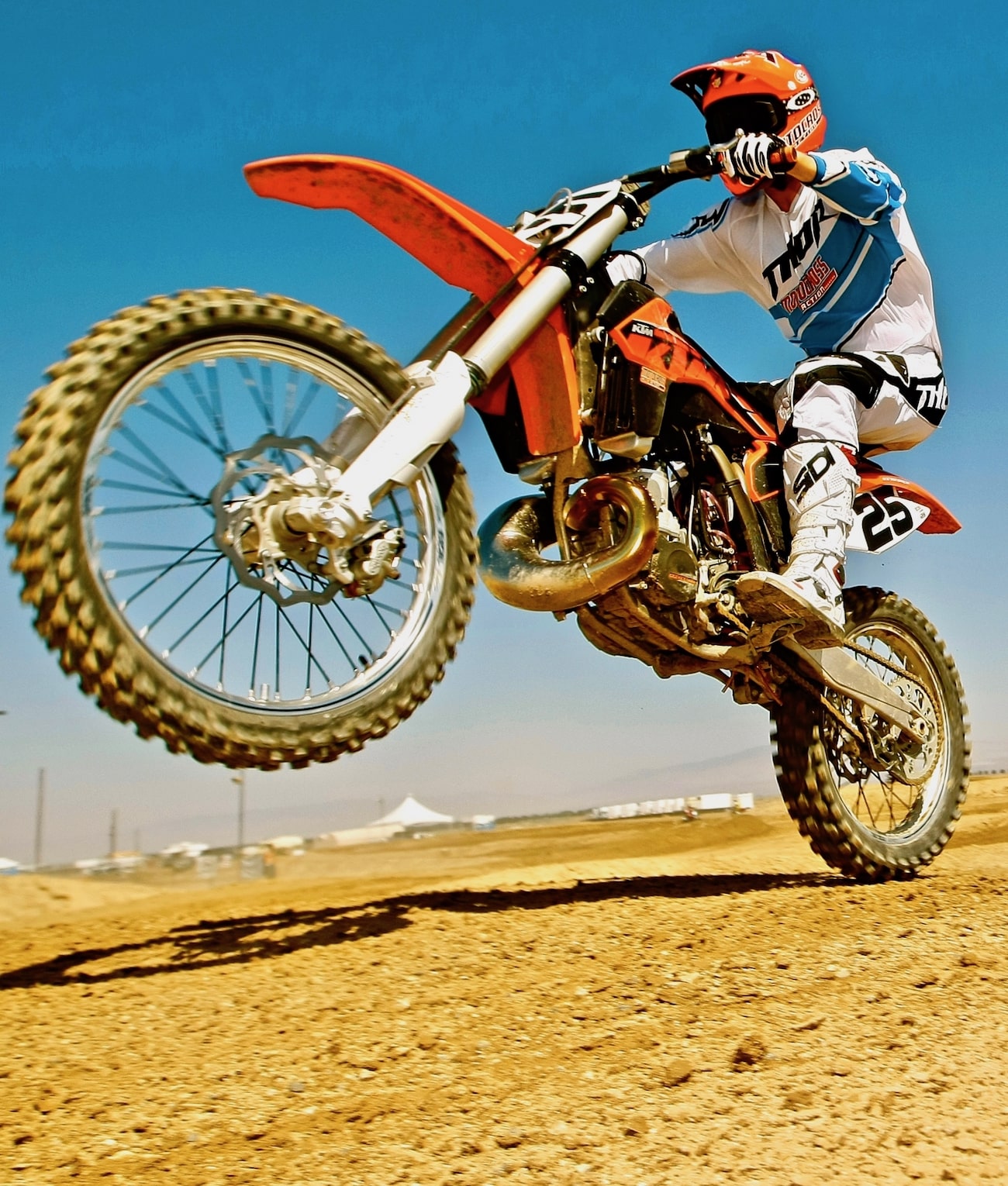
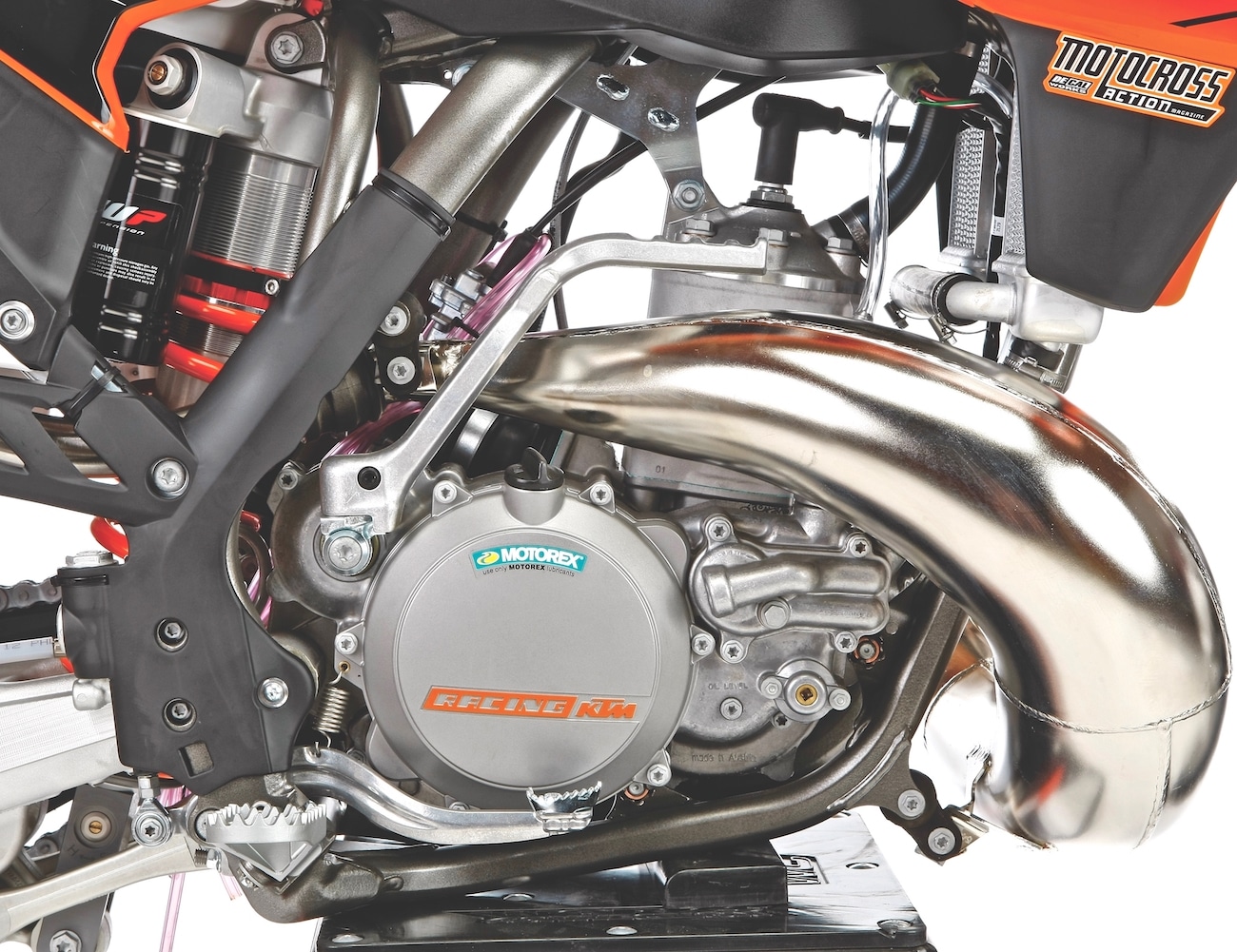
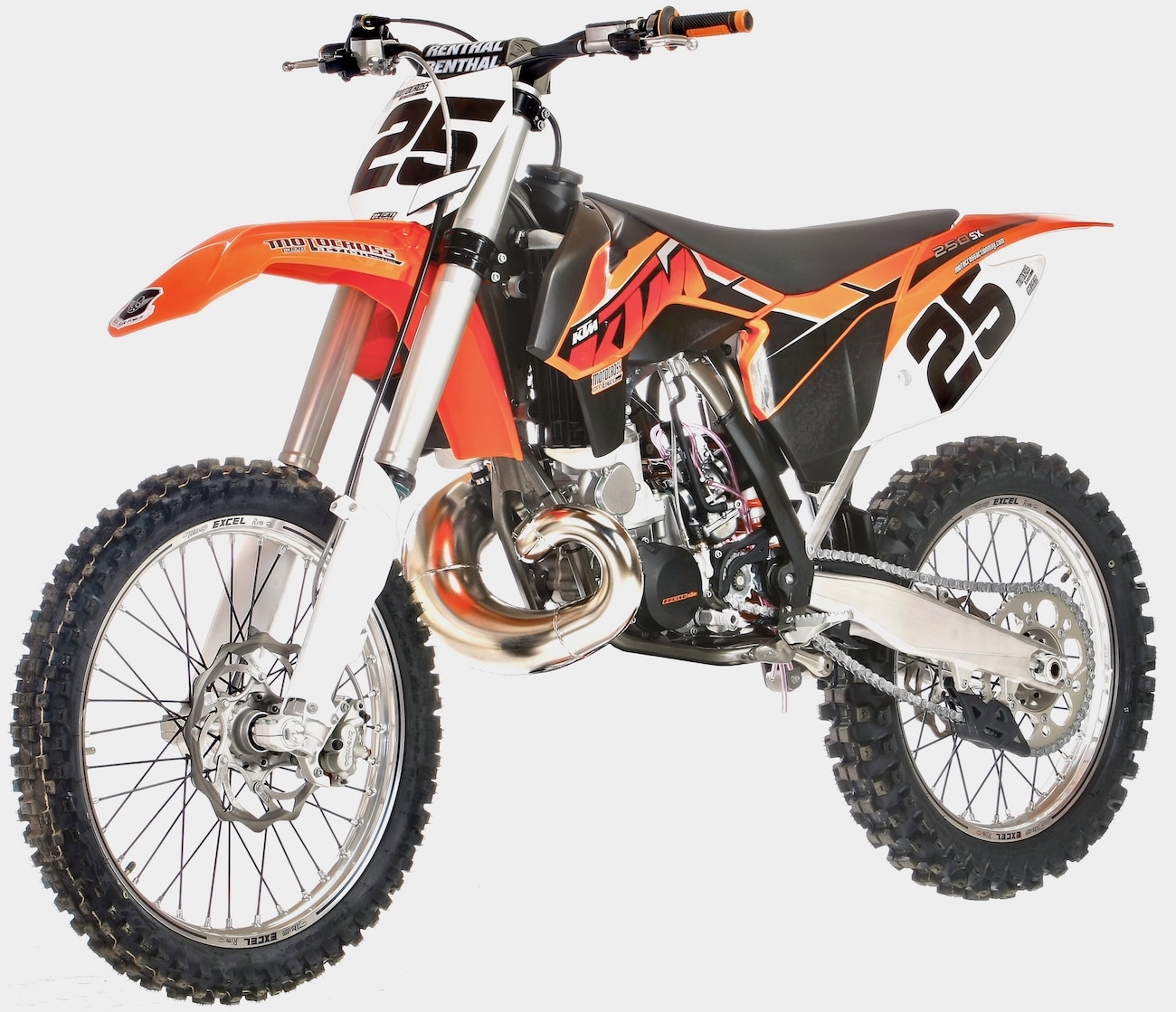
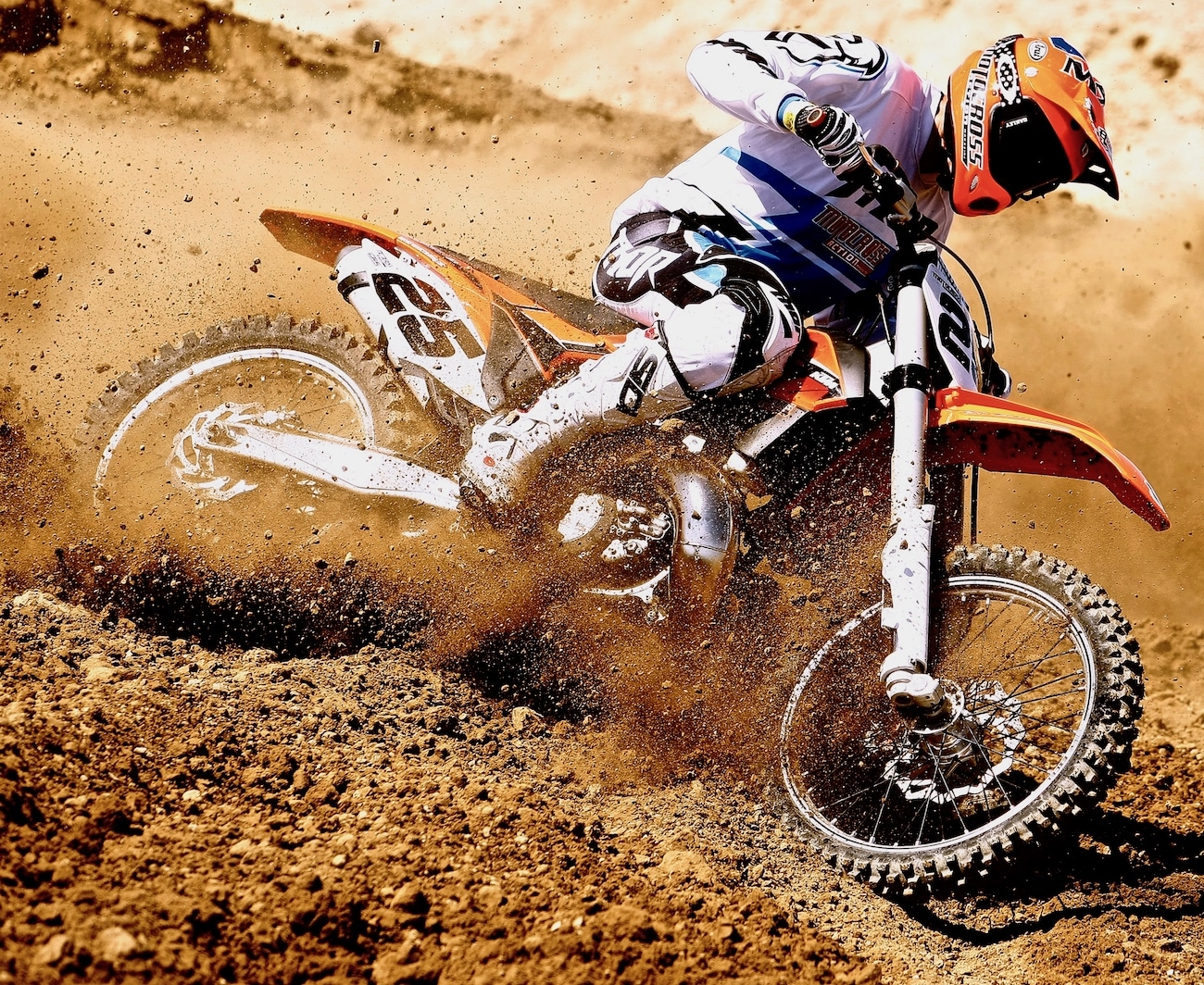
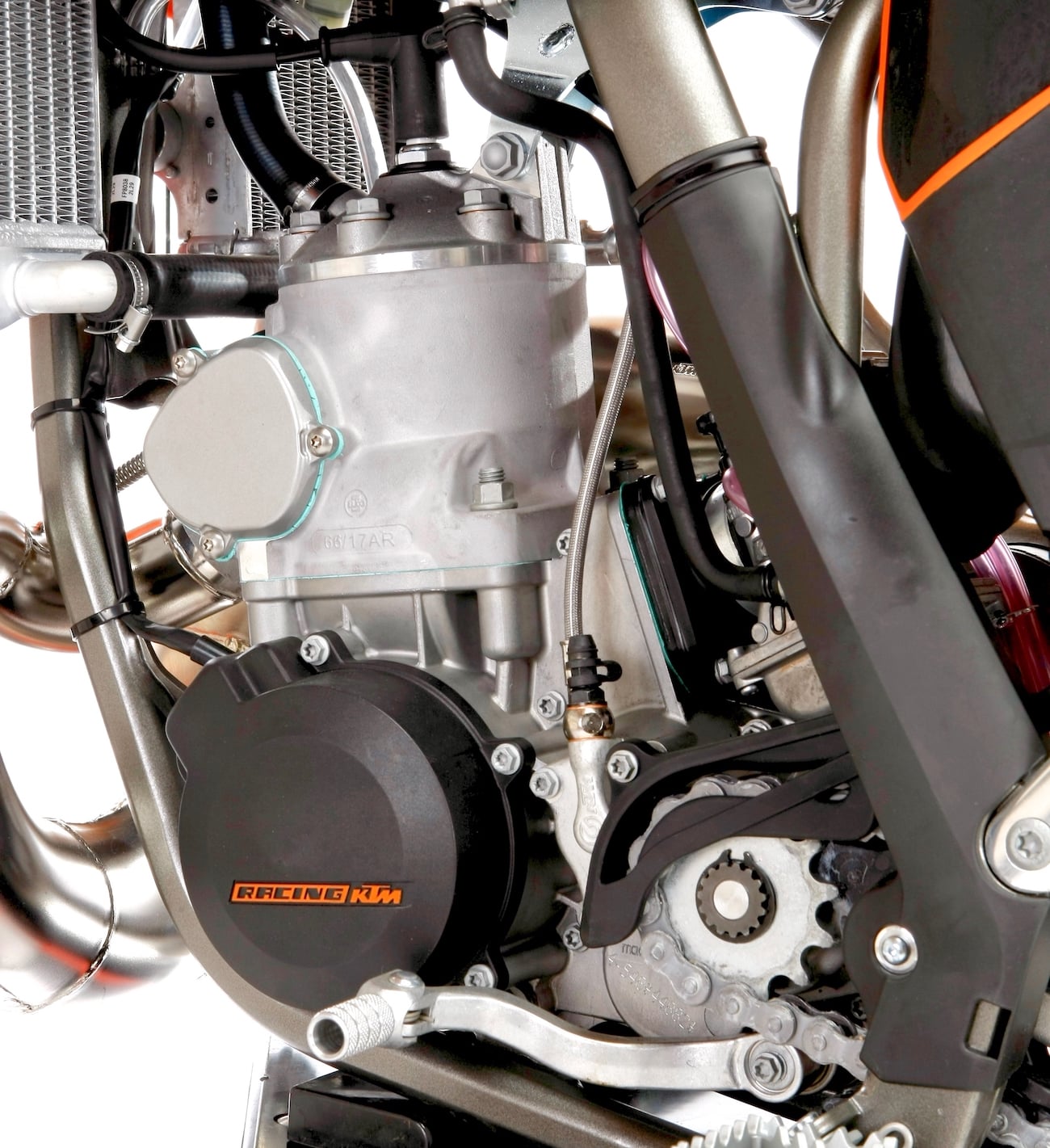
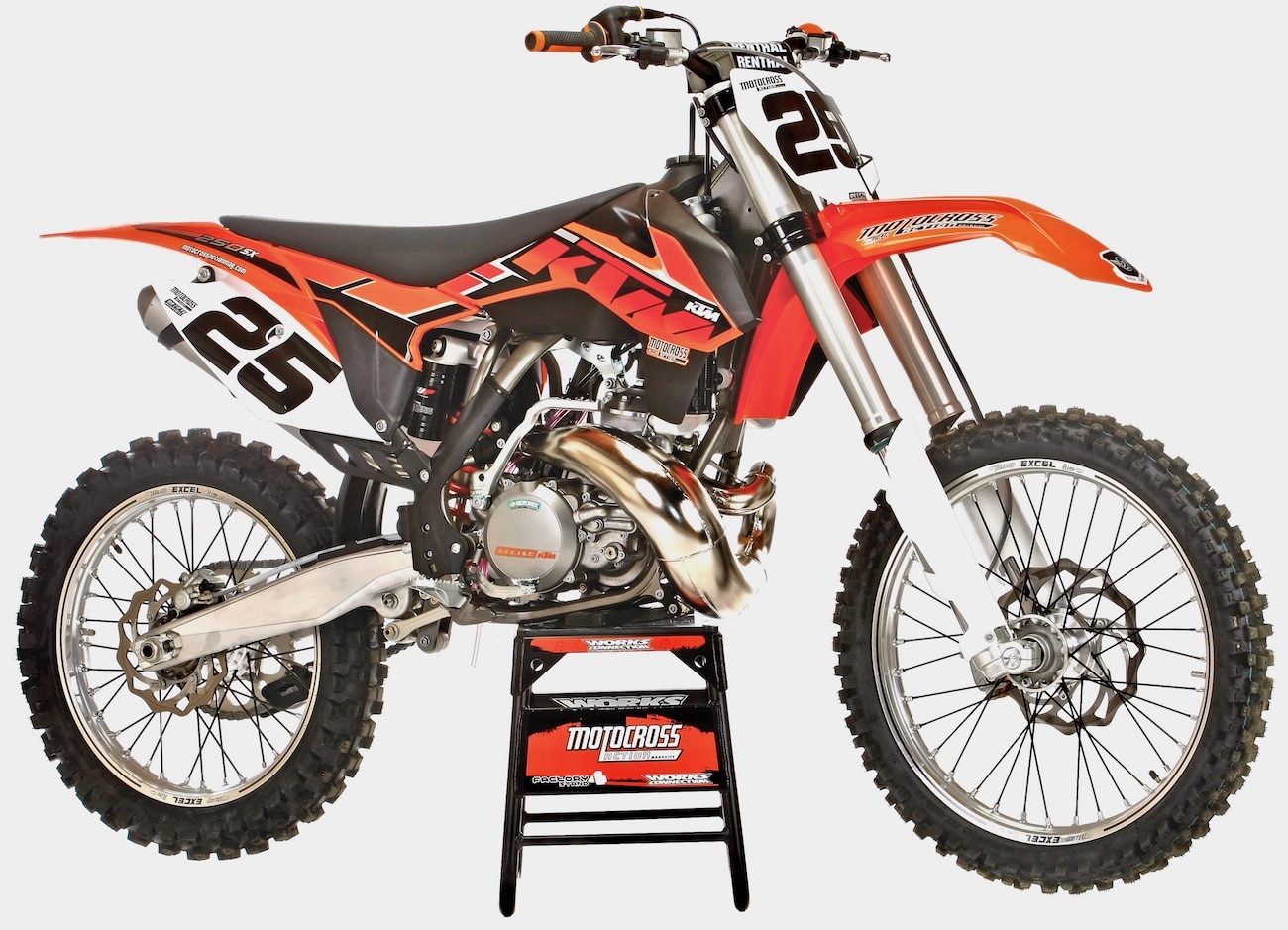

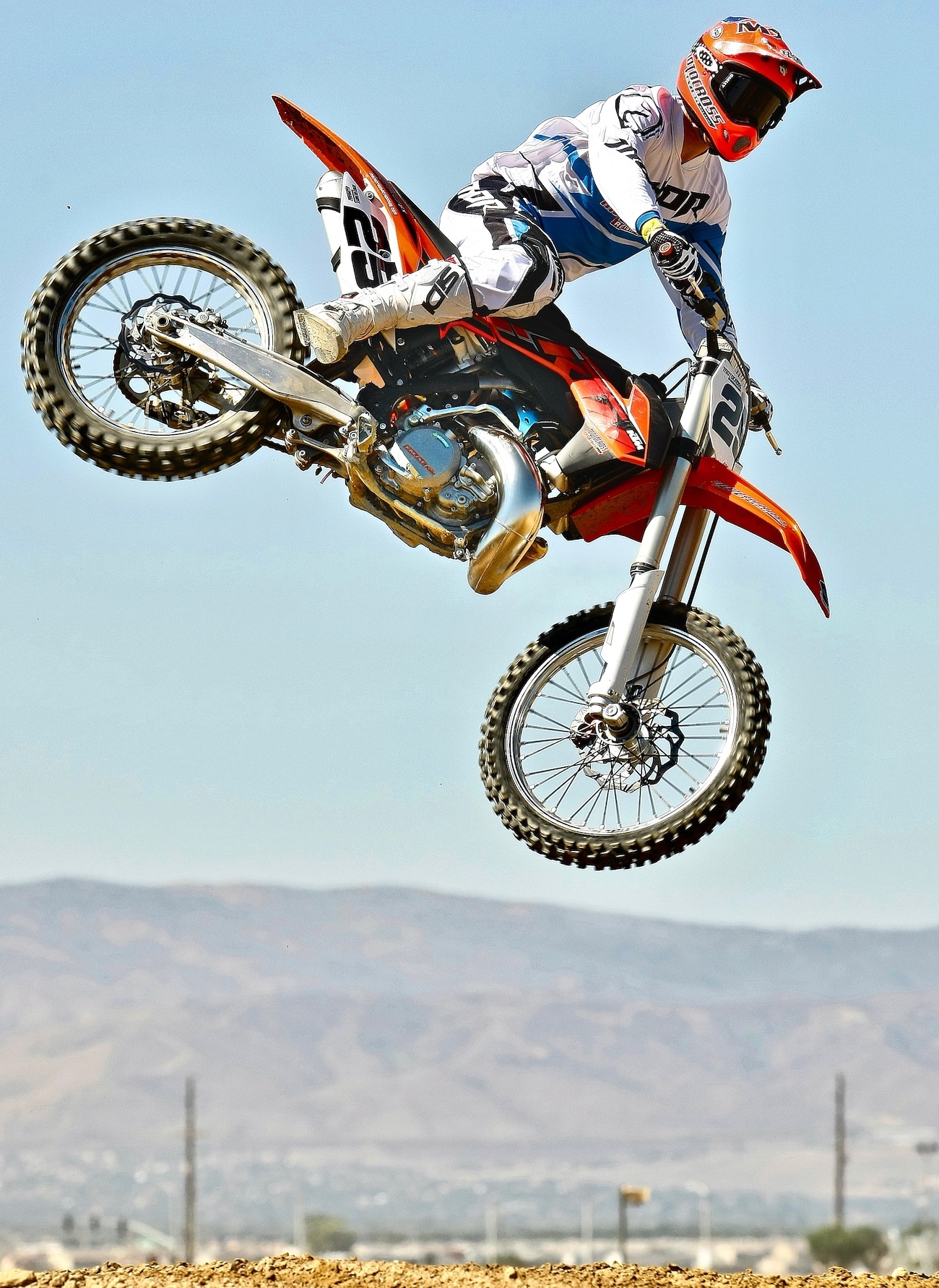
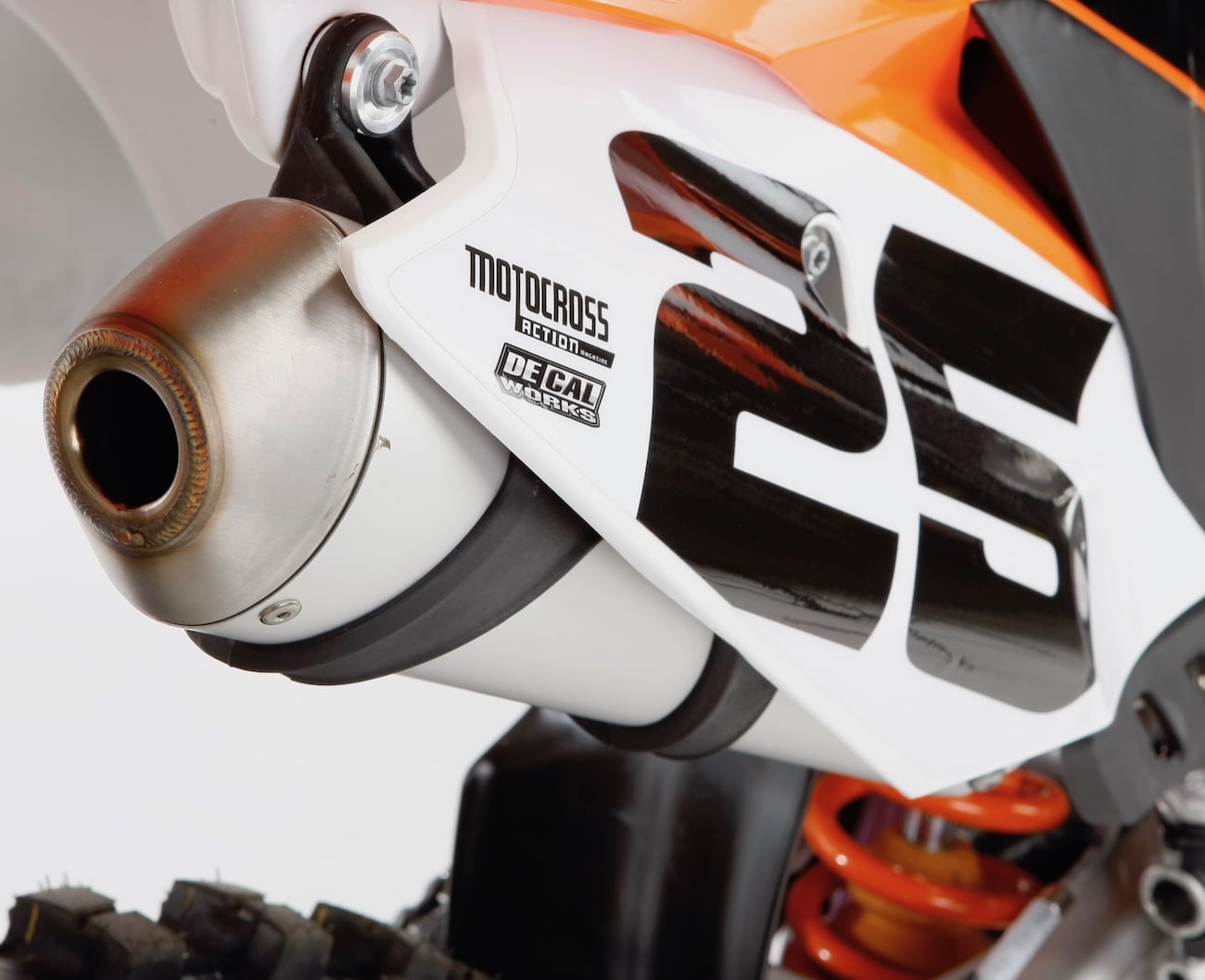
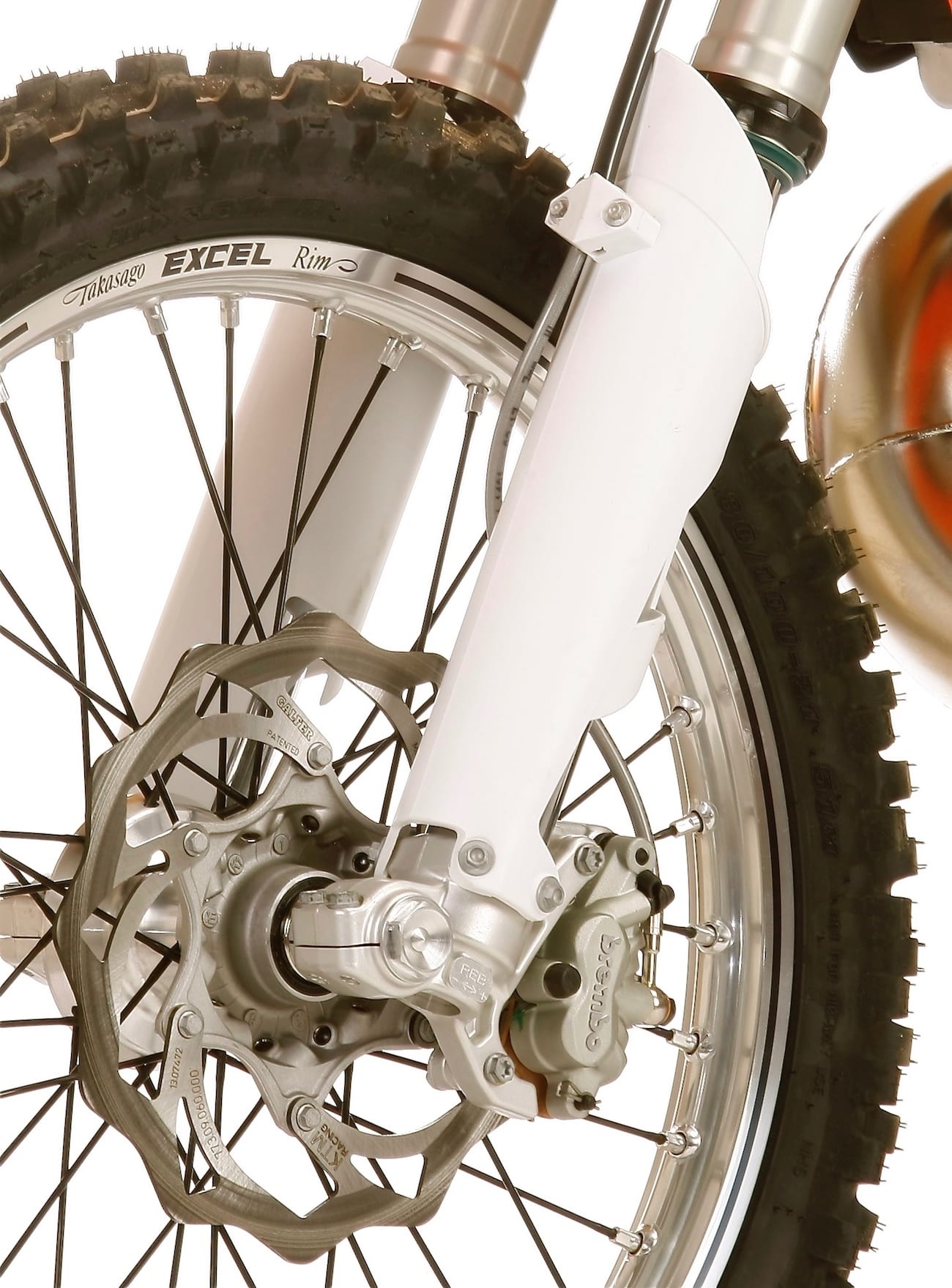



Comments are closed.